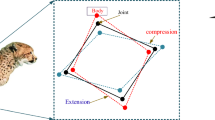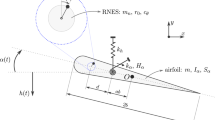Abstract
L-shaped plates have become an important focuses in structural vibration research. To determine their vibration characteristics, this paper applied a mobility power flow method. Firstly, the L-shaped plate was divided into two substructures to simplify analysis. The coupled bending moment was then deduced by applying a continuous vibration property on the common edge. Next, the response on any point of the plate and the input and transmitted power flow formulas were calculated. Numerical simulations showed the distribution of the coupled bending moment and the response of the whole structure. The validity of this method was verified by the SEA approach.
Similar content being viewed by others
References
CREMER L, HEEKL M. Structure-born sound[M]. Berlin: Springer-Verlag, 1973.
CUSCHIERI J M. Structural power-flow analysis using a mobility approach of a L-shaped plate[J]. The Journal of Acoustical Society of America, 1990, 87(3): 1159–1165.
CUSCHIERI J M. Parametric analysis of the power flow on a L-shaped plate using a mobility power flow approach[J]. The Journal of Acoustical Society of America, 1992, 91(5): 2686–2695.
WANG Y Q. Research of new type of broadband dynamic vibration absorbers[D]. Xi’an: Northwestern Polytechnical University, 2004(in Chinese).
KOH Y K, WHITE RG. Analysis and control of vibrational power transmission to machinery supporting structures subjected to a multi-excitation system, Part I: driving point mobility matrix of beams and rectangular plates[J]. Journal of Sound and Vibration, 1996, 196(4): 469–493.
CREMER L, HECKL M, UNGAR E E. Structure-borne sound [M]. 2nd ed. Berlin: Springer-Verlag, 1988.
SHENG Meiping. Statistical energy analysis for complicated coupled system and its applications in engineering[D]. Xi’an: Northwestern Polytechnical University, 1997(in Chinese).
Author information
Authors and Affiliations
Additional information
Foundation item: Supported by the National Natural Science Foundation under Grant No. 50675177.
CHEN Xiao-li, born in 1982, got her master’s degree in Northwestern Polytechnical University in 2007, now she is working in Shanxi Fast Gear Company. Her main research field is structure noise and vibration analysis.
SHENG Mei-ping, born in 1970, professor and doctoral advisor in Northwestern Polytechnical University. Her main research directions are: SEA, sound signal processing, noise and vibration control.
Rights and permissions
About this article
Cite this article
Chen, Xl., Sheng, Mp. Research on vibration characteristics of L-shaped plate using a mobility power flow approach. J. Marine. Sci. Appl. 6, 12–16 (2007). https://doi.org/10.1007/s11804-007-7021-5
Received:
Published:
Issue Date:
DOI: https://doi.org/10.1007/s11804-007-7021-5




